Looking for a few quick tips and tricks to help your tomato plants if they happen to get blight this year?
When it comes to tomato blight, there are a few steps you can take in order to not only help your current plants have a chance to survive – but also prevent blight from overtaking future plants as well. And as you will see below, the faster you take action, the better!
Tomato blight is a soil-borne fungal disease that can quickly ruin otherwise healthy tomato plants. Not only are your tomatoes at risk of contracting this disease, but so are other common vegetable crops such as potatoes, peppers and eggplants.
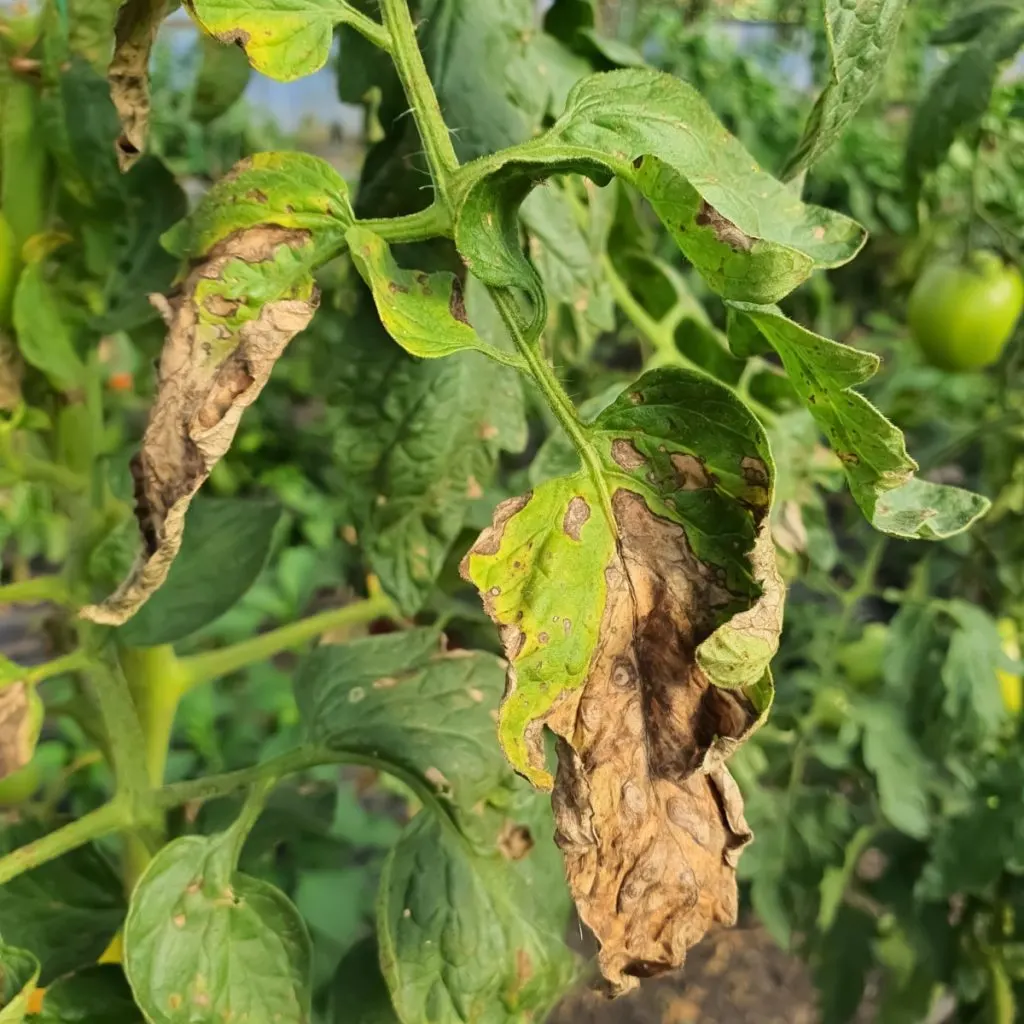
Once this fungal disease starts to appear on the plant’s foliage, it doesn’t take long before the entire plant dies off. What starts as browning leaves will quickly spread to the rest of the foliage, stems, branches and even fruit. If that isn’t bad enough, it can then transfer to other plants in your garden.
There are two main types of tomato blight that can wreak havoc on crops – early blight and late season blight. Both can be fatal if left unchecked. But the worst part is that the fungal spores can also live dormant in the soil for up to five years, just waiting for new healthy tomatoes to be planted before the disease takes hold and the cycle starts all over again.
Thankfully, there are a few things you can do to stop the vicious cycle. These simple steps can make the difference between a completely ruined tomato crop and one that continues to push out fruit until the first frost.
How To Help Your Tomato Plants If They Get Blight
Tomato blight is spread by fungal spores that live in the soil. Wind, animals, insects, and even people can drop these spores unknowingly onto your garden soil.
Once there, the spores can live for three to five years before they finally die off. This long time frame will not only cause issues with the current tomato crop, but the future ones as well. And it can lead to some frustrating harvests for gardeners that love fresh tomatoes!
Tomato blight thrives most in cooler and moist conditions. Because of this, having weather with these ideal conditions makes it all the more possible that blight will occur. But that doesn’t mean your plants can’t get blight when the temperatures soar.
Early Blight Vs Late Season Blight
Early blight occurs just as tomato plants start to form fruit. This type of blight usually isn’t fatal for the plants and doesn’t affect the fruit itself. However, it typically results in a huge reduction of harvestable tomatoes.
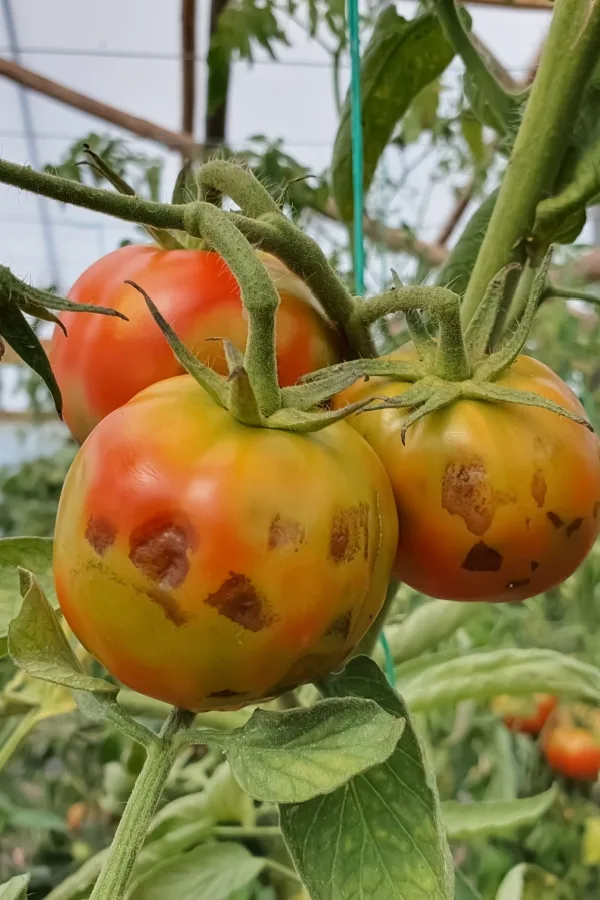
While the fruit is spared, early blight destroys all of the foliage. This leaves plants with little protection against the scalding sun and no foliage to absorb the sun’s energy. On the other hand, late season blight takes over and kills the entire plant.
Late blight starts out as small, light spots on the leaves. In quick fashion, it travels to the stems and fruit, turning the tissue black. Late season blight is unfortunately a bit more difficult to stay ahead of. However, there are still some steps you can take to if blight starts to show up on your tomato plants.
Remove Affected Foliage – How To Help Your Tomato Plants If They Get Blight
As soon as you see signs of blight on your plants, the first step is to remove the affected foliage. The best you can do at this point is try to slow down its spread by removing them. And rest assured, any leaves showing the signs of blight are not going to be able to be saved.
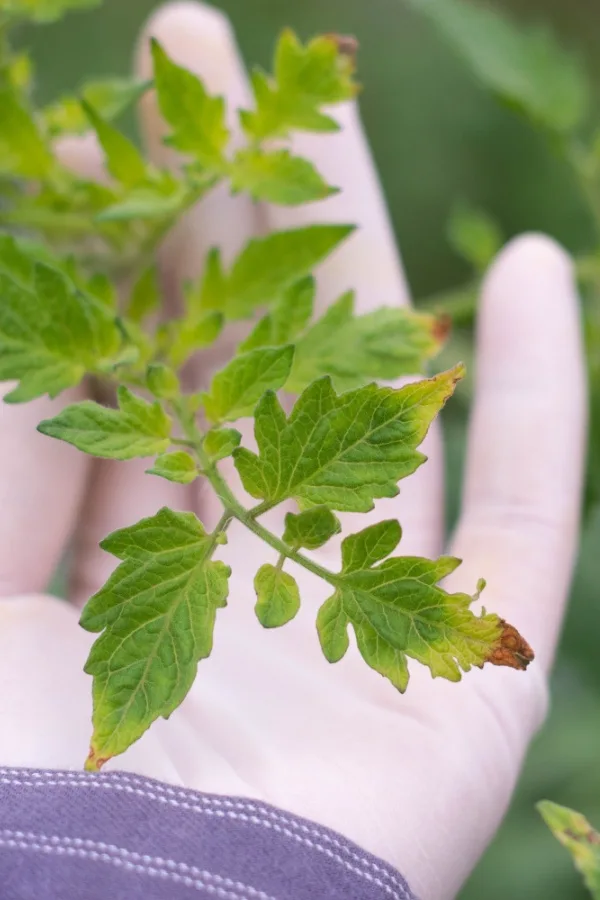
Carefully cut off any damaged leaves, stems, or fruit at the first signs of blight. Use a pair of sharp, clean pruners and cut the leaves off close to the central stem. Product Link: Fiskars Bypass Pruning Shears 5/8” Garden Clippers
Gently place the foliage in a bag or wrap them in newspapers to avoid spreading the spores further. Disinfect the pruners with alcohol wipes before moving on to a new plant to avoid cross-contamination.
If you keep pruning stems and foliage and find that the plant is a lost cause, remove the entire plant from your garden space. The sooner the plant is gone, the less of a chance that it will continue to drop spores onto the soil causing issues for future crops.
Properly Dispose Of Foliage
Do not add the pruned foliage or plants to your compost bin. Instead, dispose of it far away from your garden space in either a commercial compost pile or in the garbage.
Unfortunately, home compost piles just don’t get hot enough to kill off the blight spores. If you were to add that foliage to your pile, you would just be introducing those spores to your garden wherever the finished compost is used in the future.
Cover The Soil – How To Help Your Tomato Plants If They Get Blight
The next step is to cover any bare soil around your tomato plants. This step should really be done as soon as the tomato plants are planted in the ground, but if you have no mulch present, the sooner you can get it down, the better.
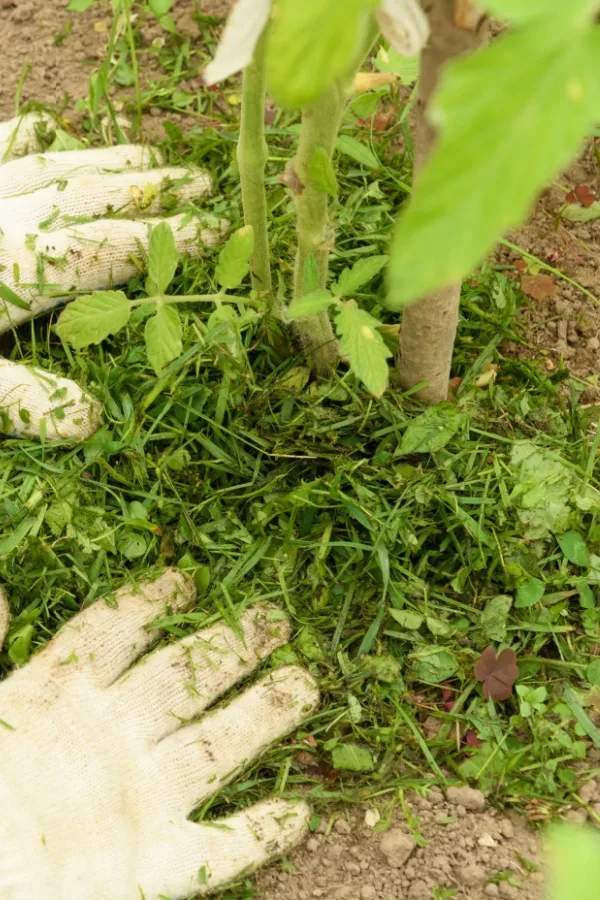
Any spores sitting and waiting on bare soil can easily splash up onto tomato foliage every time it rains or you hand water plants. But if there is a nice, thick layer of mulch around your plants, those spores have no way of getting onto the plant’s foliage.
The key is to get your mulch thick enough to provide the best protection. A good 4 to 6-inch layer of mulch like grass clippings, shredded leaves, or straw works perfectly to add a protective blanket to the soil.
There are actually a number of great benefits to using mulch in your garden space. To read all about those benefits, be sure to check out our article: The Best Way To Mulch Tomato Plants! How To Give Plants Power & Protection.
Along with adding mulch, prune up the bottom several inches of each tomato plant. As the plants grow, remove the bottom 12 inches of stems from the bottom of plants, up to the first fruiting stem. This prevents lower stems from drooping and touching the soil, thus increasing the chances of the spores getting on the plants.
Practice Crop Rotation – How To Help Your Tomato Plants If They Get Blight
Lastly, if this year’s tomato crop is a total loss, the best thing you can do is protect future crops. You can do this by implementing crop rotation – a practice of moving plants to a different location each year.
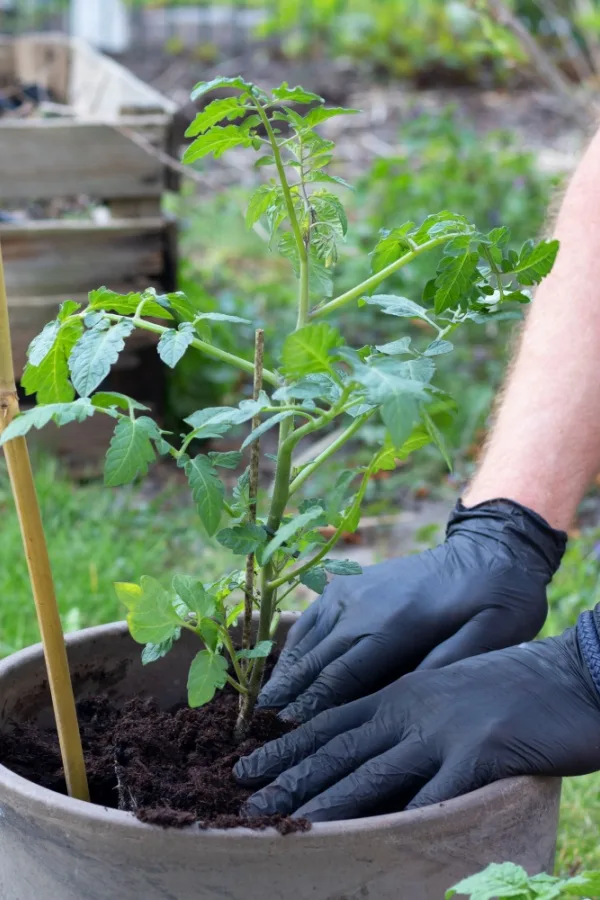
Placing tomatoes in the same soil each year is a prime way to increase the chances of getting blight, especially if you had issues the previous year. Instead, rotate their location so they aren’t in the same soil for at least three to five years.
This applies whether you are growing tomatoes in traditional in-ground gardens, raised beds, or even containers. If growing in containers, completely remove and refresh the soil each year to help prevent blight.
While you might not be able to completely stop blight if your tomato plants get it this year, you can take steps to slow down the process and ensure that future crops stay blight-free and healthy!
I Grow Tomatoes
Follow Our Facebook Page For Even More Great Tomato Growing Tips! I Grow Tomatoes Facebook Page
I Grow Tomatoes is a website created for those who love all things about tomatoes – from planting and growing – to cooking and canning! We publish two articles every week, 52 weeks a year. Sign up today to follow via email! This article may contain affiliate links.
